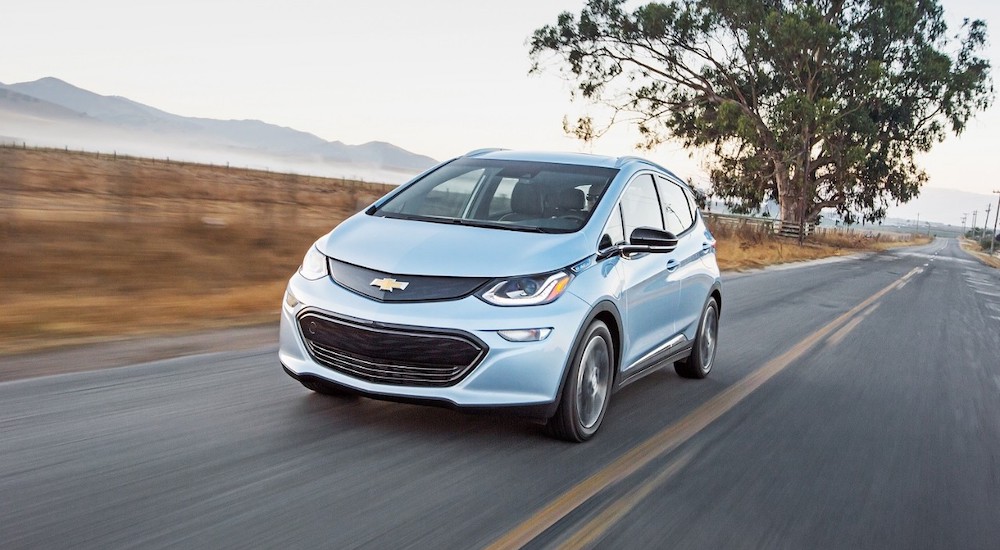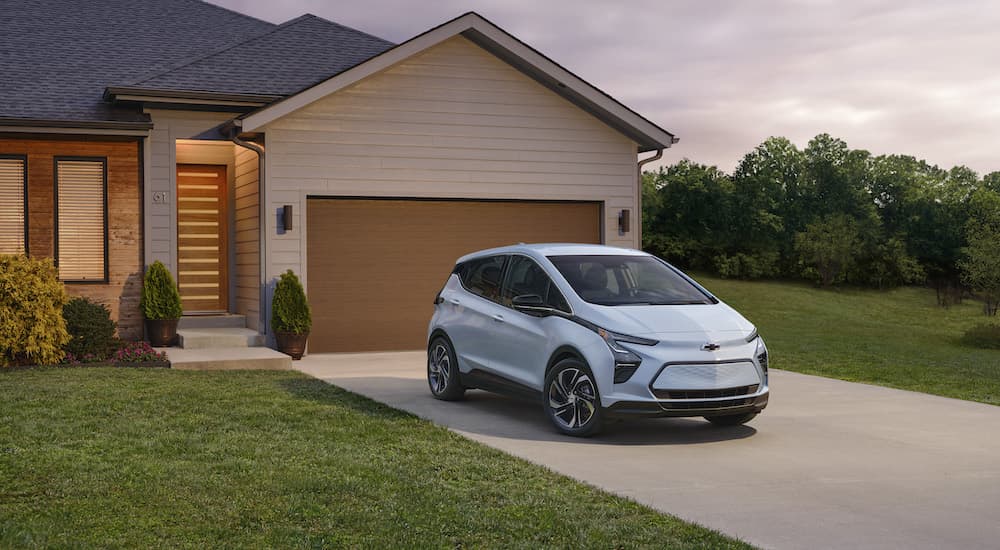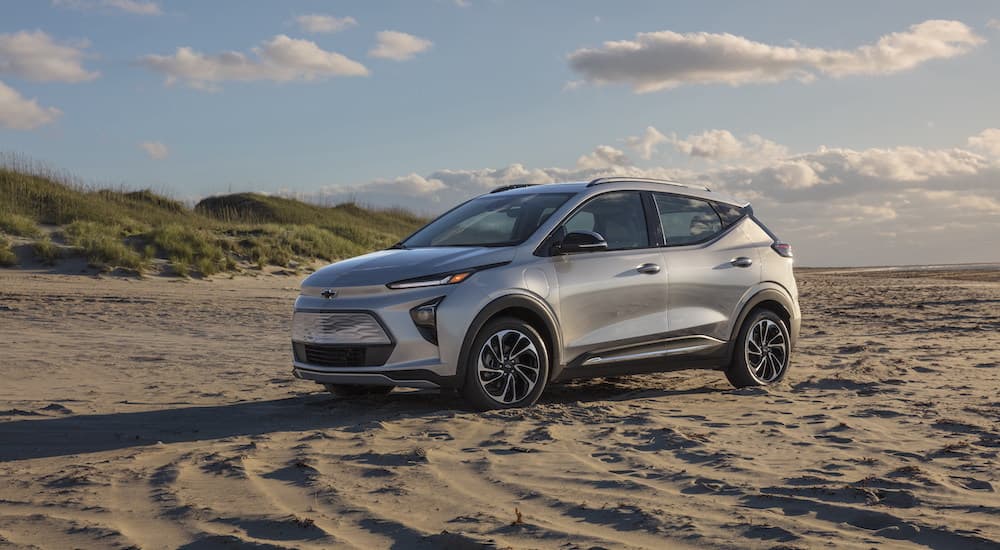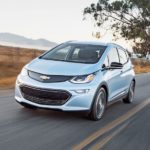Did Thomas Edison invent the lightbulb, or did he simply take credit for it? If a tree falls in the woods and nobody is around to hear it, does it make a sound? Or, if a manufacturer is one of the more recent newcomers to the EV scene, does that mean its vehicles are lagging behind the competition? I’m sorry, but I’ll only be answering the last of these three questions today.
You see, EVs aren’t new, but that doesn’t mean they’re not new to various manufacturers. Take Chevy as an example, and with the introduction of the Chevy Bolt EV and EUV back in 2016 and 2021, respectively, Chevy has become more of a serious name in the realm of electric vehicles. The Bolt EV, in particular, has been around long enough that used Chevy dealerships regularly have a healthy stock, but that doesn’t begin to tell us if these vehicles have changed the game in any meaningful way. Well, let’s find out together, shall we?
That’s the Way It Is
Something that I feel many people need to hear is that, like it or not, electric vehicles are here to stay. Most importantly, although electric vehicles aren’t going anywhere and, if anything, will only increase substantially over the next five years, this doesn’t mean that manufacturers are going to omit gasoline altogether. Why is that? It’s simple––there’s still a market for it. While electric vehicles used to be seen as a way to acquire a vehicle that will prevent emissions in the air, they’ve quickly become the alternative to drivers who are simply sick and tired of spending so much money at the fuel pumps.
Vehicles such as the Bolt EV and Bolt EUV marked a momentous occasion for Chevy, and that’s because electric vehicles were sorely missing from the lineup until then. The reason why they were sorely missing is that other manufacturers began shipping plug-in vehicles, and like any industry, if you don’t compete, you’ll fall behind. So, from a business perspective, electric vehicles are simply the right move. While public opinion has yet to shift for some, the truth is that there’s no reason to fight it; electric vehicles are the future, and there’s no other way to slice it. With this in mind, Chevy knew that a momentous task was ahead of them, and that’s not only because of the crowd that refuses to recognize electric vehicles but because of the already established EV crowd that Chevy would have to win the hearts of.

The Oldest Sibling: The Bolt EV
The Bolt EV was launched in 2016 with the release of the 2017 Bolt EV. Leading up to the launch of the Bolt EV, not much had been revealed. Many fans, like myself, anxiously waited with bated breath, curious as to how Chevy planned on making an entrance with its first mass-produced electric vehicle. Of course, this was aside from the GM EV1, which is its somewhat distant ancestor from the late 1990s. However, once information on the Bolt EV officially surfaced, we were treated with the promise of over 200 miles of travel range on a single charge, and thanks to its motors and batteries, it would perform rather amply too. Plus, the Bolt EV has a slew of tech that complements its electric powertrain to craft a vehicle that feels directly out of the future.
Upgrades were made as time went on, but in its first iteration, the 2017 Bolt EV houses a 60 kWh battery alongside the aforementioned motors, and the result is 200 hp and 266 lb-ft of torque. As for the mileage range the original Bolt EV delivered, one full charge allowed drivers to travel up to 238 miles before more charging was required.
There are two factors that tend to turn people away from EVs: power and charging times. As for the power of the vehicle, the horsepower and torque ratings don’t lie, but in real-world usage, the Bolt EV can get you up to 60 mph in a mere 6.5-seconds. And, charging times aren’t egregious either, especially when paired with a fast charger at a charging station, which is important to note because there is a far greater amount of charging stations in the United States than there were even five years ago, and this number is only going to increase over time.
As mentioned, upgrades were implemented into the Bolt EV as time passed, and the first true game-changing addition was an increase in its already impressive mileage range. While performance ultimately stayed the same, even down to similar charging times, the 2020 Bolt EV swaps out the 60 kWh battery for a slightly larger 66 kWh one. Without getting deep into the science of batteries, the basic principle is a larger battery can house a greater charge. With the new battery, the mileage range of the Bolt EV saw a nearly 9% increase, going from 238 miles on a single charge to a max of 259 miles.
The Youngest Sibling: The Bolt EUV
For a few years, the Bolt EV stood alone in Chevy’s lineup, serving as the only plug-in electric vehicle that drivers could purchase. It didn’t take long for a newcomer to join it, however. Come 2021, the 2022 Bolt EUV was unveiled to the market, and what it aimed to do was to accompany the Bolt EV, but this vehicle would be a pure SUV in and out, unlike the subcompact hatch that is the Bolt EV. In real-world usage, the Bolt EUV has a few tricks up its sleeve in the form of notable features that aren’t found on the regular Bolt EV, most notably is Chevy Super Cruise.
With the Chevy Super Cruise, it’s the closest thing we have to autonomous driving without being officially considered ‘autonomous driving.’ How it works is rather interesting. The Bolt EUV detects whether or not the road it’s traveling on is in its ever-growing database of compatible roads and highways, and a green bar will then illuminate the steering wheel. And no, the light isn’t the only cool thing about it. The real appeal comes down to its ability to accelerate, decelerate, and even provide turning whilst on these roads without input from the driver. The reason it’s not autonomous is that drivers will still have to pay close attention, and that’s because features like these are still somewhat in their infancy, and drivers must be able to grab the wheel to take over controls when needed.
As for the performance and mileage range, the Bolt EUV performs identically to the Bolt EV in regards to horsepower and torque. This means the Bolt EUV shares 200 hp and 266 lb-ft of torque, but its battery is a 65 kWh battery instead of the aforementioned 66 kWh battery found in the later Bolt EV models. What this means in practice is a 247-mile range on a single charge, which is a slightly lesser mileage range than the newer Bolt EV but still more than the original Bolt EV models that housed a 60 kWh battery.
Is Chevy Changing the EV Market
Ultimately, all of this begs the question: has the Bolt EV and EUV changed the game in any meaningful way? I believe it has, and it’s because more manufacturers than ever have begun developing electric vehicles on the mass-market level, and Chevy already has a firm foot in the door. Also, Chevy isn’t stopping with these two EVs. Many more are rapidly coming to join the lineup with better batteries and a challenge to other manufacturers to deliver the tech people need at a still affordable price tag.





